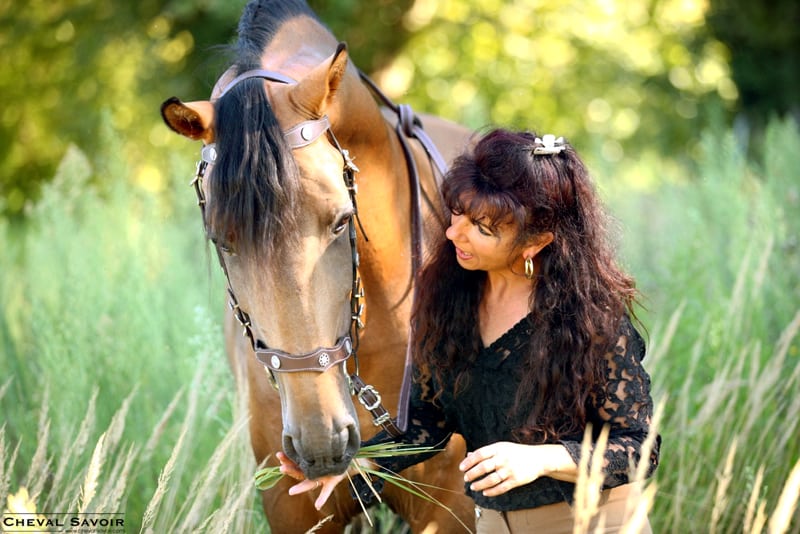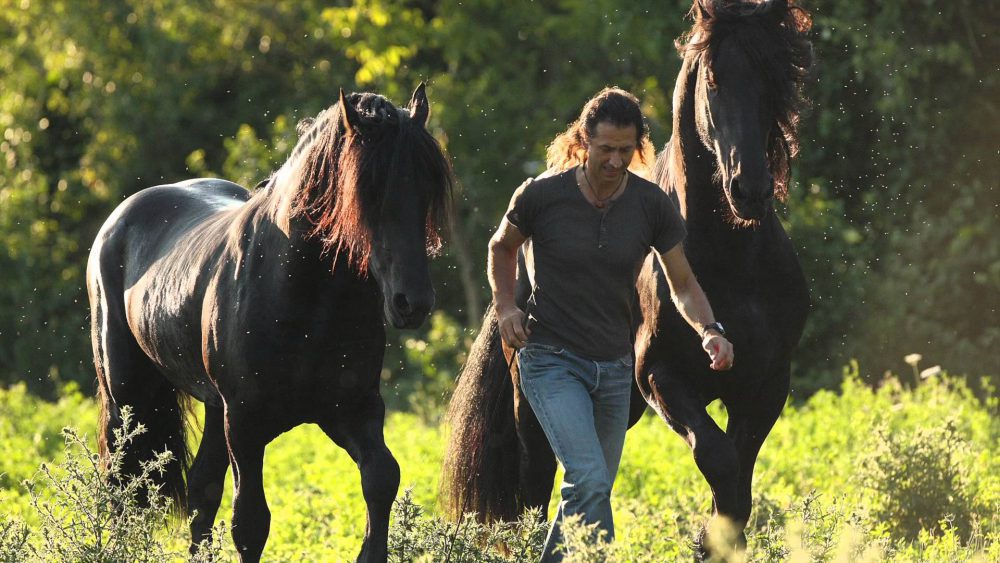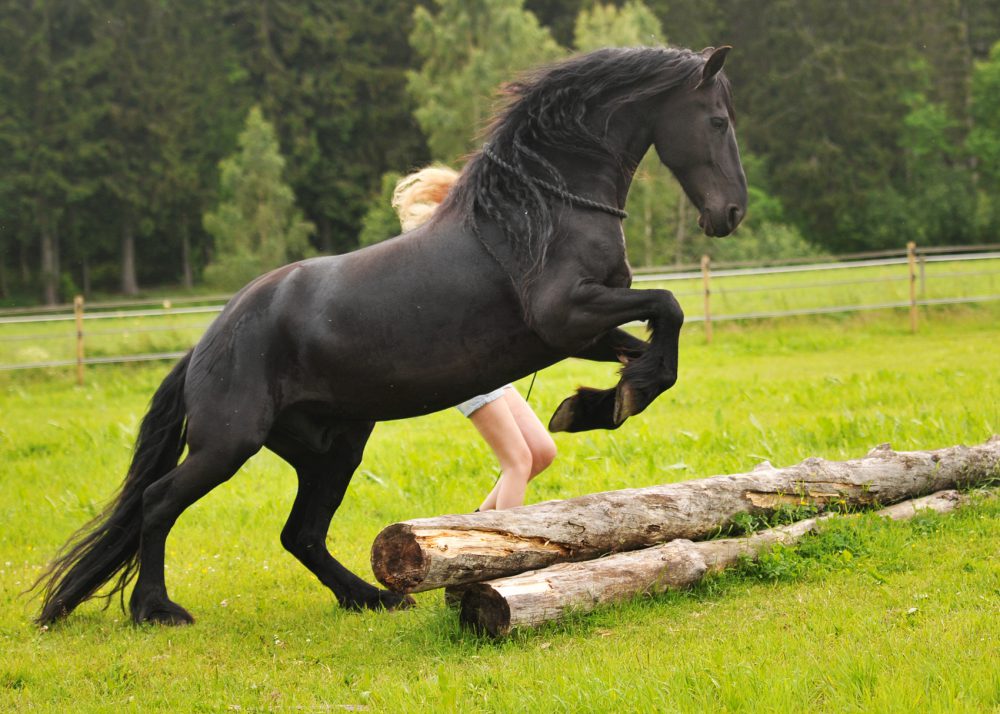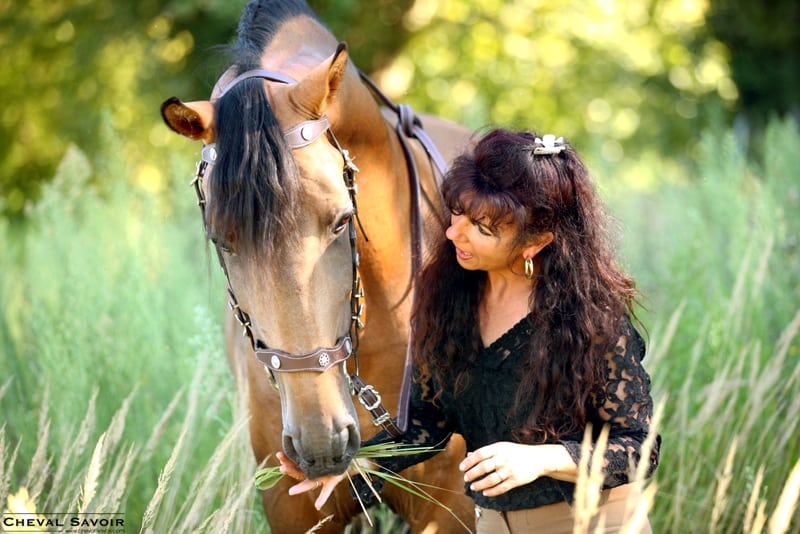
[vc_row][vc_column][vc_column_text]Horses are truly unique creatures – they are gentle and kind, yet strong and determined when they wish to be. They trust you with their life, and they follow your lead wherever you go. Or do they? Do you find your horse may follow you easily in some things, but will hesitate and resist in other situations? Maybe you have noticed your horse does not listen in dire situations or goes into panic mode. Happy and healthy horses come from strong leadership within the herd, including the human herd. I have seen many horse – people partnerships through my clinics and you can immediately tell by looking at them who is in charge – the horse or the human. You may think you are in charge of your horses, that they will follow your lead as you see fit. But does your horse really see you as the leader? How do you make sure you maintain your status? Here at Animal Talk we know we have the answers to creating and maintaining leadership with your horses. Let’s explore this more.

Horses need to be in a herd and every herd needs a leader. If you are going to be the leader of the herd, don’t take it for granted. Every member of a herd will look for a leader but the question that will be asked by your horse, is ‘who is in charge?’ YOU or ME? Horses need the answer to this question – or they will decide for themselves. This is where some horses will be labelled as being ‘the naughty horse’, as in the absence of a clear leader, they try to take on tht role. Leadership will also be challenged when there are strong personalities involved, be it yours or your horse. Kathy came to me about her horse Chloe. She was a gorgeous three year old thoroughbred, and Kathy said she was one of the most dominant and sassiest horses she had owned. Kathy would spend time everyday training with Chloe, but when she felt they were finally getting into a routine, Chloe would appear disinterested and stop following her commands. Kathy would do everything she could to try and get Chloe’s attention again, until she would just give up in frustration and take her back to the paddock.
After connecting with Chloe, I understood where the issue was coming from. Chloe was a highly intelligent being, and found a lot of the routines quite boring. She found it entertaining to test Kathy’s boundaries and enjoyed being chased around the paddock by her. Chloe also said she had high social standing in the herd, and did not feel she received the same respect when she was in these training sessions with Kathy. I explained to Kathy why Chloe was doing this, and she was surprised but determined to earn Chloe’s respect as leader again. I gave her some techniques to use to stand her ground when they were in training sessions, and advised that she sometimes let Chloe run the session; this would give Chloe a chance to express herself and build trust between the pair. A few months later, Kathy emailed me to say her relationship with Chloe had greatly improved. They were now a strong pair together, with Chloe following Kathy around wherever she went. Chloe now wanted to be with Kathy.

Your horse doesn’t have to mould and shape into exactly what you want, any more than you do with your horse. You both have the right to be yourselves, but learn to compromise with each other to create a harmonious relationship. The role of a leader is one of great responsibility and consistency; if you are exhibiting leadership qualities, your horse will more likely feel compelled to follow you. Humans find it hard to accept the constant challenge for leadership, but need to understand that you cannot remain leader unless you consistently prove you are worthy of the job. This is true of any leadership role.
Being a leader isn’t an easy gig, it also requires you to maintain a level of expectation to be followed not just by you but by your horse too. How to achieve this? Well by leading with consistency and respect, not by creating fear in your horse. Fear incites many behavioural issues and will never reinforce trust and a good relationship. Using fear to force your horse to follow you, leads to unpredictability in your horse and can threaten your safety and your horse’s safety too. This is where the term ‘dangerous horse’ stems from. If a leader is calm and reassured, this will be reflected in your horse and the rest of the herd. Do you want your horse forced into submission or a willing, cooperative partner?
So how do you know if you are leading correctly? How do you show your horses they can trust you? You can follow the simple tips below on maintaining your trust and relationship with your horse:
- Be aware of your emotional state before going to work with your horse- Try not to project emotional or nervous energy around your horse. Your horse is like an energy barometer; if you feel unsure, so will your horse. If you feel calm, your horse will reflect that state.
- Create confidence with your posture – always walk or ride confidently when with your horse and project a calm, composed non-threatening manner. Even when you do not feel this way, your horse will sense the uncertainty in your energy, therefore you have no choice but to discipline yourself to maintain this calm and reassuring energy. You will find it will benefit you just as much as your horse!
- Eliminate confusion – clear, consistent signals or commands, all of the time, not some of the time! Many clients’ horses have told me, just when they feel they have got it right for their person, they come back with new commands and they have to start all over again. For your horse, it feels like they can’t ever get anything right, and they end up confused and frustrated trying to please you! Of course there is always new training methods to use with your horse, however the fundamentals must be set, consistent and do not change. This will help your horse to understand what is expected of them.
- Be assertive: Your horse needs to know you are in calm control of all situations to feel safe. This assertiveness is a great foundation to building trust with your horse. By showing assertiveness in all situations consistently, your horse can be reassured all is well, which allows them to relax and enjoy their time with you.
- Consistent interactions: Your horse/s need regular interaction, whether training, playing or feeding for consistent leadership to become routine. Once you have set consistent commands, managed your emotions, and displayed your assertiveness, it is time to maintain these assets in all situations with your horse. Whether it is during training, play time or simply just being together. Your horses will learn that in every environment you have their protection, safety and care under control and can be happy that you are in the leadership role.
Being worthy in the eyes of your horse is so important and you need to rise to the challenge. It is a partnership – free of personal agendas, private needs and most of all, ego. You need to listen and learn the needs of your horse, so they will be interested in learning about you. To be a true leader, is not about domination into submission, but a privilege that your horse bestows upon you; they recognise the leader in you.

To get the full rundown on how to be a successful leader for your horse, get your copy of Ask Your Horse here
[/vc_column_text][/vc_column][/vc_row]
